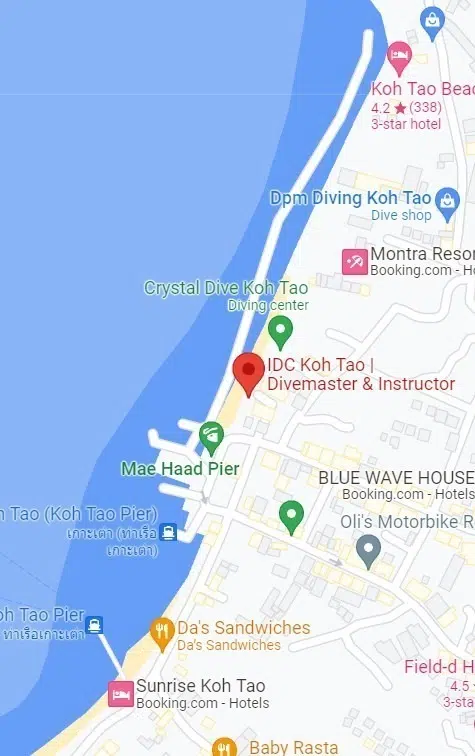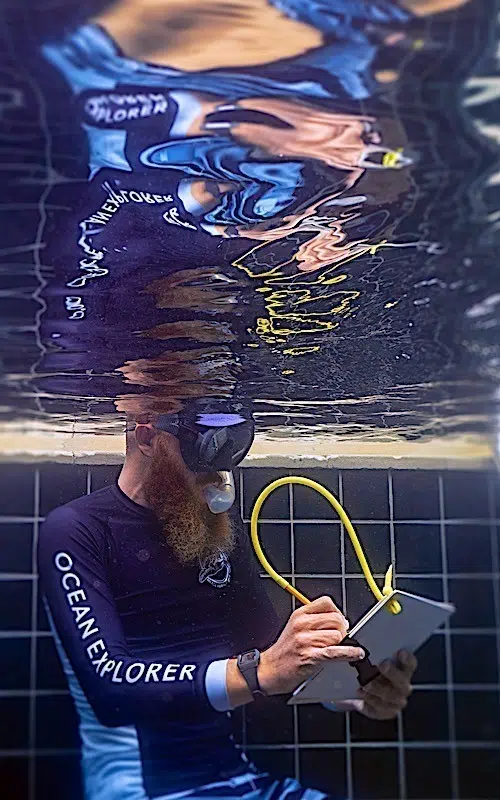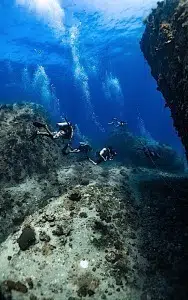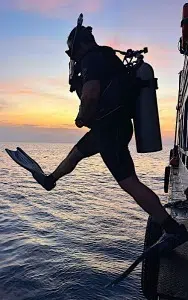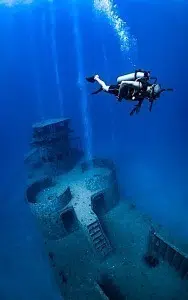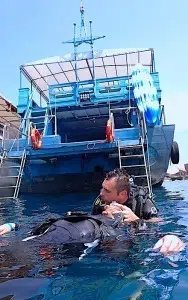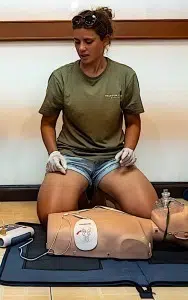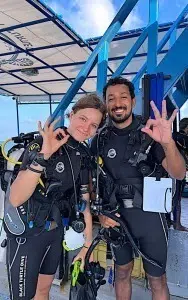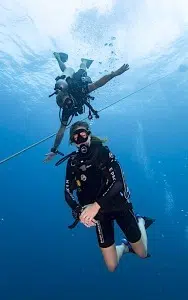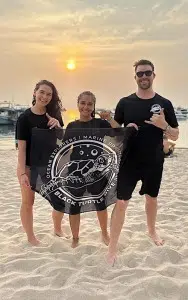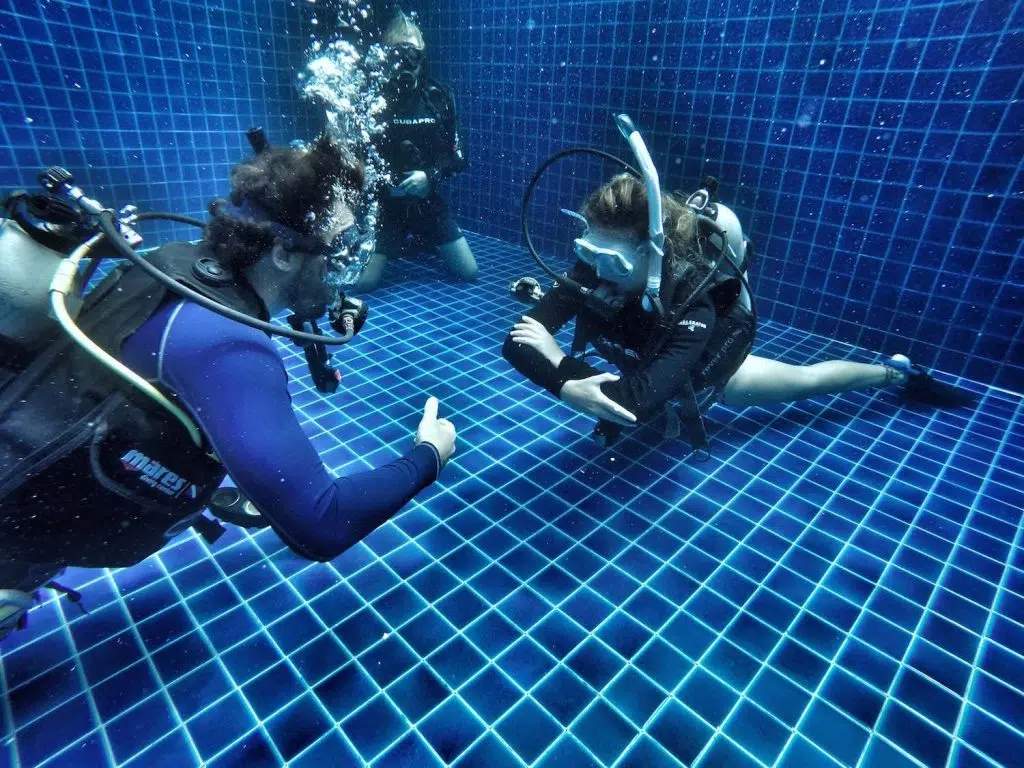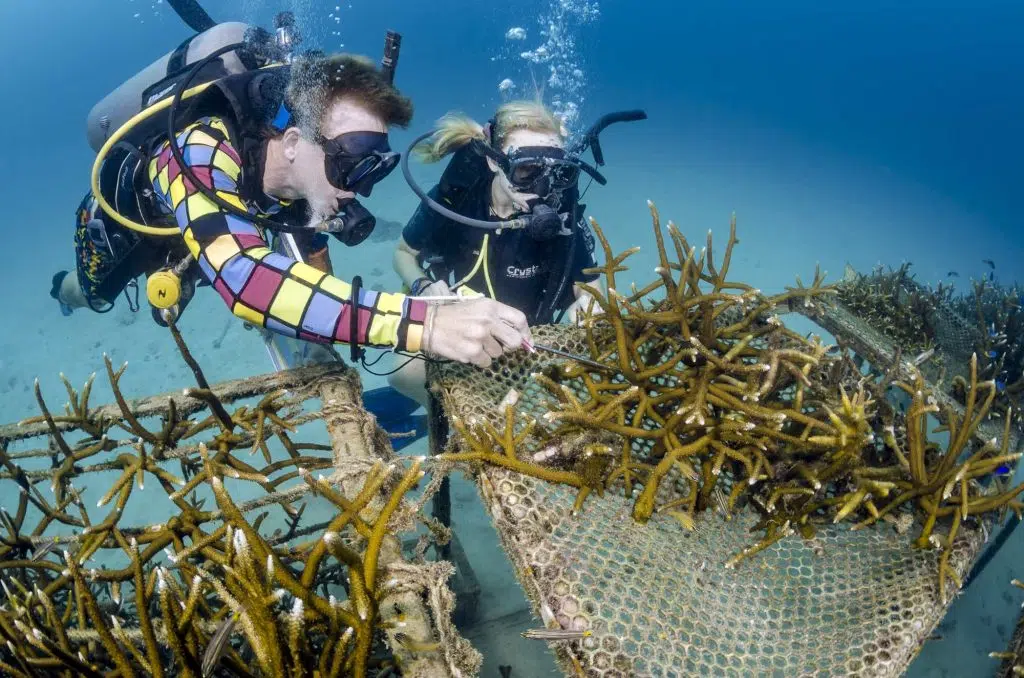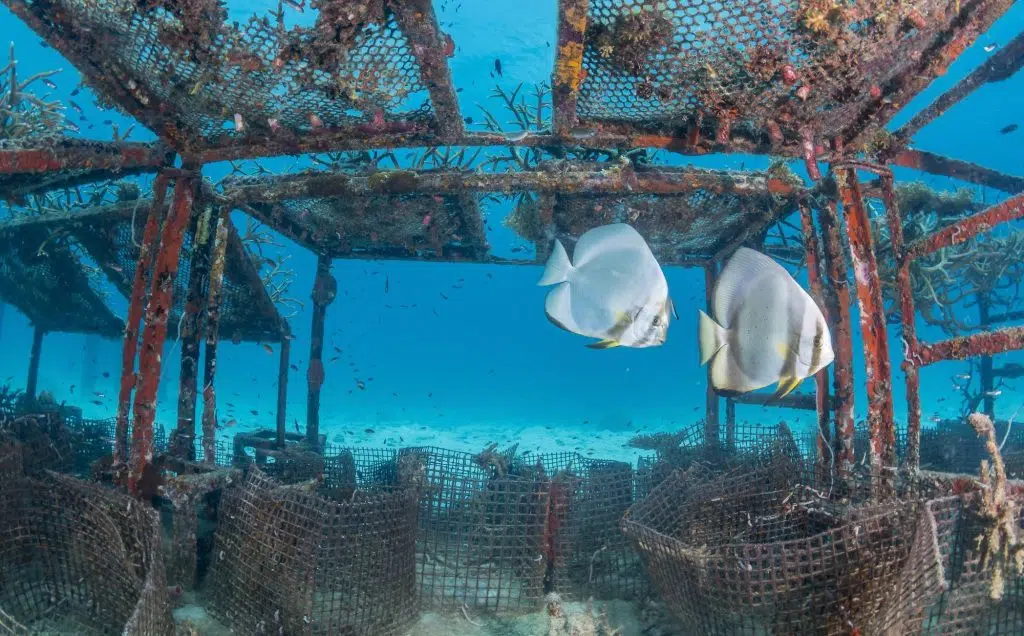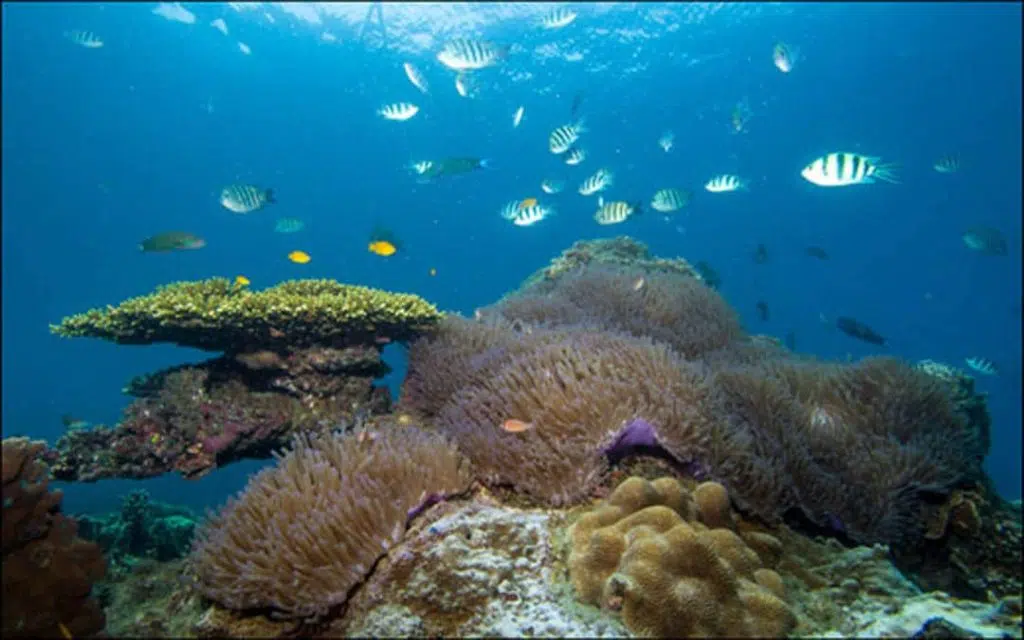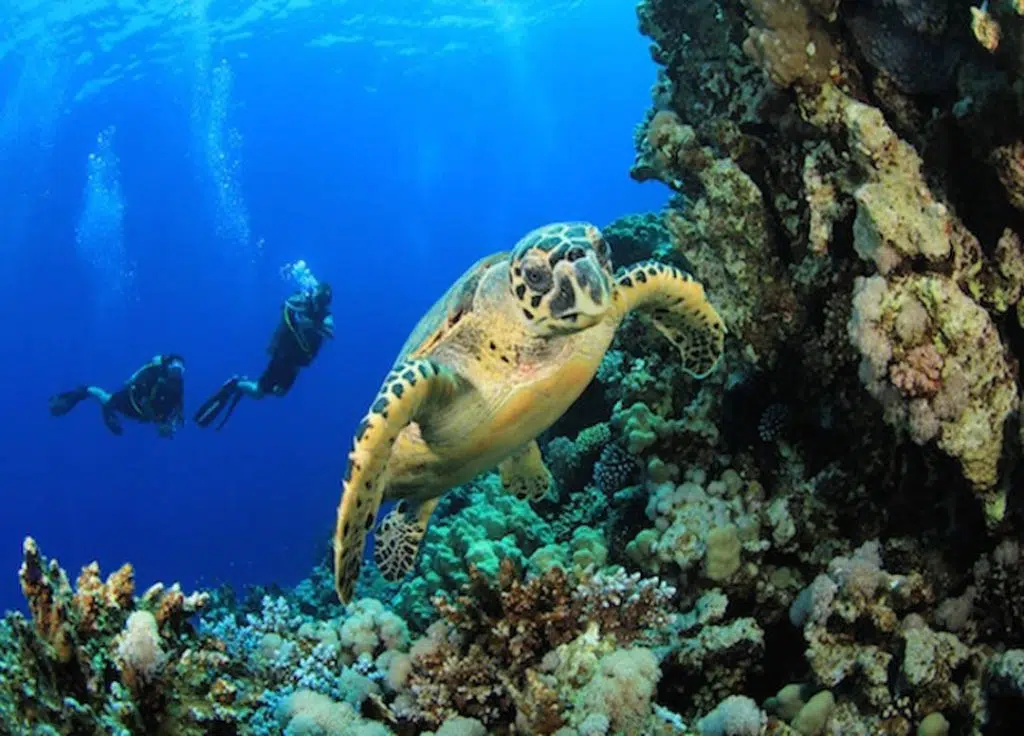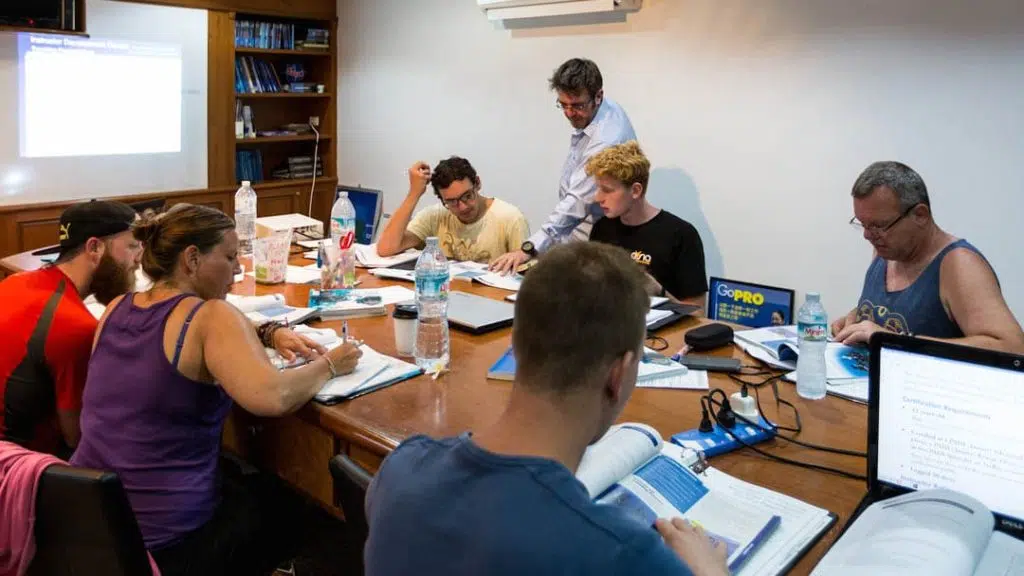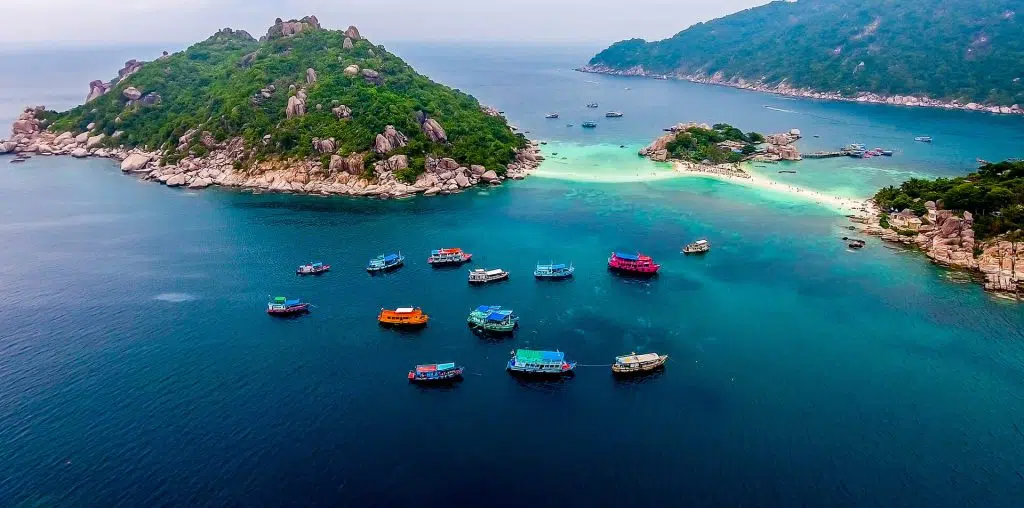Your role as a Diving Instructor
Donning a mask and snorkel and placing your face underwater can be a daunting undertaking for many a novice scuba diver. Breathing from a scuba regulator, the bubbles, the noise, often takes some getting used to. Dive instructors have an important role to play as mentors for the growing army of scuba divers around the world.
As a long serving dive instructor I always worked hard to ensure that the students first experience underwater was an enjoyable one. Looking after my students to ensure their diving experience is a fun and safe one has always been paramount. But it could be argued that dive instructors today have an equally important responsibility to be ambassadors for the ocean.
The oceans and coral reefs are under ever increasing pressure from the burgeoning human populations and the effects that they have on our oceans. Oceans full of plastics, reefs degraded by pollution, warming oceans causing coral bleaching, the list of threats to the world’s oceans goes on.
Dive instructors train the scuba divers of the future, but they also have a role to play in training them how to be environmentally respectful and responsible divers.
Why is Buoyancy Control Important?
One of the most critical skills to master as a scuba diver is buoyancy control. Buoyancy control not only helps keep you safe, by ensuring you can manage and maintain your position while underwater, it allows divers to look after and protect the environment.
I explain to my students that good buoyancy control allows you to protect yourself, and equally as important, protect marine life. Divers with poor buoyancy have a tendency to inadvertently bump into the coral and damage marine life. These activities can go a long way to damaging the marine environment we all know and love.
By mastering buoyancy control divers can maintain neutral buoyancy and maintain a safe distance from fragile marine life.
Using the marine environment to improve your diving
Having good buoyancy control does not necessarily mean you can’t touch anything underwater. The aim of the exercise is to protect fragile marine life. The same as if you are at a friends house, you wouldn’t work on their garden, but you walk on the path. Underwater the equivalent of a ‘path’ are the sand channels and spaces that exist between coral outcrops. These spaces can be gold to the novice diver, used as important way points to stop and rest and get control of your buoyancy during a dive.
I have done over 3000 dives and sometimes I still have to stop and work out where I am at regarding my buoyancy. These sandy patches can be really useful to ‘gather your thoughts’ and gain control mid-dive while protecting the environment.
As an instructor you will spend a lot of time stationed on the bottom conducting and testing the skills of your students. Practicing mask clearing or perfecting buoyancy by mastering the fin pivot all require stationing students on the ground to conduct these skills.
Astute instructors know that the more space you provide your students away from fragile reefs, the more likely they are to protect the reef environment. It is also important to make sure students are far enough away from the reef to avoid making physical contact, but it is also important to ensure there is enough space to prevent fins from kicking up sand that can smother corals and other marine life.
In this scenario, it is the instructors’ responsibility to make sure there is enough space between their students and the reef.
Teaching advanced scuba diving techniques
With more experienced divers, you may want to teach them how to use the dead rocks and non-living elements of the reef to their advantage. The underwater world is a dynamic environment replete with waves, surge, currents and other water movement events that can challenge divers, especially new divers.
Sometimes divers will need to grab onto the ground or the reef to prevent getting pushed into fragile marine life. Teaching divers the difference between living benthic organisms, such as coral and sponges, and dead reef rock helps divers protect themselves and marine life by only using non-living organisms to support their balance and control. They’ll display better control and role model behaviour that will look positively on the instructor.
Role Model Behaviour as a dive professional
Of course if you want your students to display good environmental diving behaviours, you have to display good practices yourself. As a dive instructor I am very aware that my students will mimic my behaviours. Consequently I am always aware to display good environmental practices. I use dead coral rock to help my balance when trying to get close to marine life. I make sure my students see what I am doing and after the dive, I explain what I have done and how it protects the environment.
Educating divers in the Marine Environment
There are so many things in this world that when you have experience, things make perfect sense. To the inexperienced diver, coral looks like an inanimate rock. You’d be excused for thinking you could grab it for support when you are underwater. The only way new divers are going to know what they can and can’t do underwater will come down to the knowledge the instructor imparts upon the students.
The flagship PADI conservation program is the Project Aware program that all instructors are qualified to teach once they are certified as PADI Open Water Scuba Instructors. Making people ‘aware’ of their impact helps them understand that as divers, they are responsible for fine tuning their skills that helps them be good, considerate and environmentally responsible divers.
Crystal Dive and Eco Koh Tao Leading the Way
The development of artificial reefs by Crystal Dive Koh Tao and Eco Koh Tao is a strategy designed to implement a company wide policy focused on the protection of the environment.
Much of the diving undertaken at Crystal Dive and generally on Koh Tao is focused on training. From PADI discover scuba diving experiences and Open Water Courses, to PADI Rescue diver and PADI professional programs such as the Divemaster and Instructor Development courses.
All of them don’t require much more than for the students to be underwater to practice their skills and ideally see some interesting and exciting marine life.
Junkyard Reef was designed specifically to support a large proportion of training dives and concurrently, a marine conservation program. By conducting training dives at an artificial reef, the accidental bump by training students is not as consequential as it would be if it were a pristine natural reef.
Additionally, by training on artificial reefs, the natural reefs get an opportunity to breathe without the added pressure of training divers swimming around them, potentially kicking the coral and damaging the environment.
Artificial reefs supporting dive professionals and conservation
These artificial reefs have been used as a focus of marine conservation training. By growing coral in nurseries and transplanting giant clams, we have managed to turn these sites into biotic reefs and attracted marine life. This marine life provides added incentive to use these sites as training sites because they attract more marine life enhancing the appeal of Junkyard Reef.
With the proliferation of marine life, and the expansion of the reef, Junkyard has become a favourite destination with photographers and videographers.
Marine Conservation as a dive professional in Thailand
To become a true ambassador additional training is highly recommended. The more you learn, the more knowledge you can impart on your students and the more environmentally responsible a role model you can be.
The Reef Check Eco diver program is the industry standard conservation-training program that teaches people how to survey marine environments. As a Reef Check Eco diver the training you get on how to identify marine life is second to none.
More importantly it teaches not only what things are and how to identify them, but it explains what their role is in the environment. For example coral is a foundational species that creates the habitat within which the rest of the environment lives and thrives.
Coral competes with algae for important space on the reef. The reason the algae doesn’t overgrow and smother the reef is due to the many herbivores that graze the algae down, like cows in a paddock.
Herbivores are made up of rabbitfish, parrotfish and surgeonfish by day, and at night sea urchins come out from their daytime hiding spaces to graze on the algae. All species have a role to play and contribute to a healthy and vibrant coral reef.
To become the complete marine conservation PADI professional, undertaking the PADI marine resource management course teaches you in-depth marine ecology within the reef environment enabling you as the instructor to teach others.
With this specialist knowledge you can impart this information on the new breed of PADI scuba divers and be a true ambassador for the marine environment.
Preserving the magic of coral reefs on Koh Tao
Coral reefs represent the most beautiful, spectacular, amazing, unique, fragile environment I have ever dived in. The thought that they would be damaged, degraded or worse, not exist is enough inspiration for me to ensure I share my love for reefs.
By imparting this knowledge of the role we all play in preserving the marine environment, I feel empowered in my ability to be an important conduit for the conservation message for new divers.
It’s an important role all PADI professionals must embrace in their journey as ambassadors for marine conservation.
Author
Nathan Cook M.Sc
PADI MI #479720
Bio: Applied Marine Scientist
Nathan is an applied scientist and specialist in coral reef restoration and capacity building with 20 years experience working in the Pacific and Southeast Asia.
Nathan has been a passionate advocate for sustainability and stewardship, working with communities, tourism businesses and governments to activate and sustain meaningful on-ground actions to build resilience of coral reefs.
He has developed local-specific marine monitoring and assessment programs and establishing innovative coral reef restoration programs in several key locations around the world. His decades of practical experience are underpinned by a Masters degree in Marine Science.
Nathan also co-founded Eco Koh Tao with Matt Bolton and was the early driving force behind Junkyard Reef, which has been one of the success stories of reef restoration, research and artificial reef development in the waters around Koh Tao.












